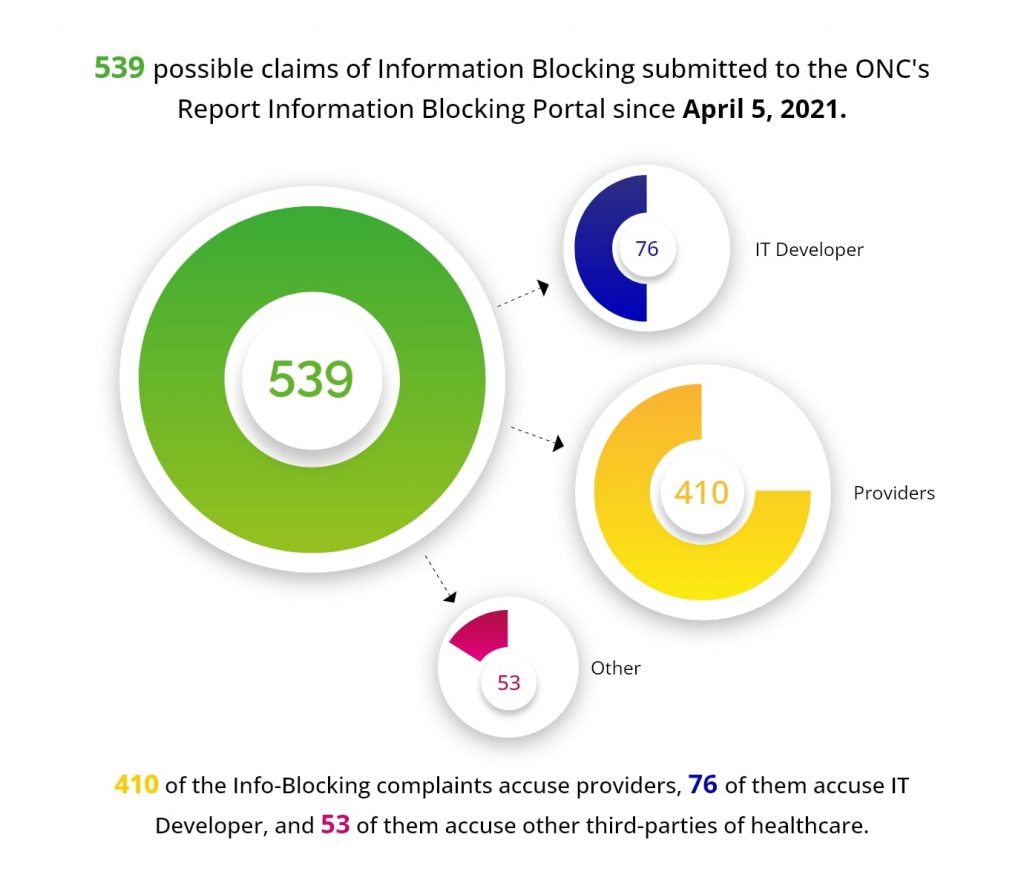As we can see from the above infographic providers are facing the wrath of information-blocking claims. 6th October 2022, HSS released a revised version of the Information blocking rule to reduce this provider burden.
What is new in the Information Blocking act?
- Changes to EHI Data: The definition of EHI has now expanded. Earlier information blocking definition was limited to the EHI identified by the data elements represented in the USCDIv1. After October 6, this definition includes all the ePHI in the DRS. DRS or designated record set under HIPPA includes medical records, billing records, enrollment, payment, claims adjudication, and medical management record systems for a health plan. The designated record set can include information in any format such as images, PDFs, or wave files that were used to provide care for a patient and in billing after the encounter.
- Patients now may now request information in 10 days or less depending upon the encounter. They can do so in any format of their liking and also on any application such as Apple health.
- Information blocking claims excludes physiotherapy or mental health-related notes and information which was recorded to be used in an administrative or criminal or civil proceeding.
What are the Impacts of the Changes on Patients?
- Patients can now ask for any information that is a part of the ePHI in the DRS.
- Patients can request a restriction on who can access their medical information. They have the right to request that certain groups of users not be allowed to access their medical information. This is known as a “request for restriction.” They can also request to not share their medical information with research projects. This request can be made by writing to the healthcare provider or by submitting a form through the HHS website.
- Patients can request their healthcare information in any format such as paper, flash drive, or CD.
How providers should prepare for these changes?
- Examine all guidelines and procedures pertaining to information requests. The designated record set should be examined and re-defined.
- Ascertain whether your company will be able to comply with patient demands to release their records in the requested format (e.g. flash drive, CD).
- Examine the extent to which patients will have access to the designated record set via the patient portal, and think about the transfer of patient data to and from mobile health monitoring applications.
How can you sail through these challenges?
Every provider network will require a thorough check to figure out where they can include these changes and also figure out possible areas of revenue leakages. A compliance expert can help make sense of all these changes and update the system.
At Nalashaa, our healthcare interoperability solutions have been solving provider problems for more than a decade now. We can help you stay ahead of everyone in this ever-changing regulatory landscape. Connect with us at info@nalashaa.com.
Mitrajit Das
Latest posts by Mitrajit Das (see all)
- Revolutionizing Healthcare Communication: The AIDET Approach - March 17, 2025
